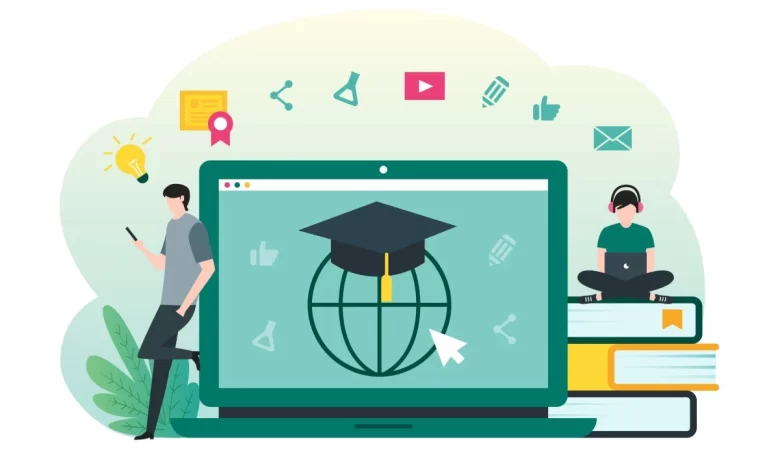Online Learning Increase Retention Rates in Institution

Online Learning Increase Retention Rates in Institution
A few years ago, experts suggested that online learning is the future of education; however, that is something the world is experiencing presently. Moreover, with the technological advancement, the higher educational institutes got the opportunity to expand their operations and make some instrumental changes. One of the primary strategies that they implemented includes integrating tools like learning management system that helps to carry out institute’s various administrative tasks.
Online learning eliminated the geographic restrictions that made it difficult for students to pursue their education; now students can enroll in any course they want and proceed to complete their degree. However, there is a flipside to this as well; despite the efficiency of online learning, the physical disconnection from their peers, staff and the campus leads to students feeling a sense of isolation. On top of that, the attention span of students which is already short prevents them from focusing during the online classes, therefore the issue of retention rates also gets highlighted quite frequently.
Lets take a look at some of the factors that leads to low retention rates:
Traditional classroom environment facilitates students with face-to-face learning so after a while the teachers are able to determine who pays attention in the class and who do not. In contrast, the lack of social connectedness, ineffective methodologies, inadequate communication system, etc, involved in online learning severely affects the retention rates. For instance, a recent study indicated that 42 per cent of online students complete their studies in comparison to 77 per cent of on-campus students.
Is it possible to retain students for institutions to retain students in online learning?
Yes, certainly it is possible for higher educational institutes to retain students, if they follow through some fundamental institutional commitment such as:
- Implementing unique approaches to develop student community.
- Establish proper student support system that would provide timely assistance.
- Following pedagogical strategies to provide a wholesome learning environment.
- Continued support provided by the institute staff.
- Delivering content in an engaging manner.
Build a community
One of the highlights of college or university life is meeting new individuals, however, it is hardly possible if a student is pursuing online courses. Teachers can organise groups within a class depending on the subject topics and assign them a group project. While working on the project, they would work together to accomplish a common goal and in the process will create a bond, thereby building a community. Consequently, building a community results in creating a support network that becomes beneficial for students whenever they require help throughout the academic year.
Centralize and prioritise learning
A few institutes branch out and facilitate online learning but fail to prioritise it as one of the core academic operations, which results in many administrative lags. For instance, students might not receive proper response from the admin staff during the examination or enrollment time. At the same time, they might encounter difficulties when it comes to accessing the study material. These are two of the commonly occurring instances which causes students to drop-out of the institute, leading to low retention rates.
Therefore, it is essential for the institute to centralize and prioritise online learning and accordingly provide student support.
Strengthen the communication system
Given the fact students do not require to go to university or college premises in remote learning, they depend on the institute for any important information. So, the institutes need to maintain a proper communication system with the students through emails, text messages or even phone calls. For instance, news about examination, results, seminars, changes in dates and classes should be sent to students as per scheduled time.
Use learning tools
Institutes can integrate technology for strategic academic purpose which could help teachers to understand the weak points of students and help them accordingly. One of the most useful tools that they can use is learning analytics which would help them gain insights, thereby, enabling to develop appropriate strategies. In the long run, with the help of proper data and tool, they can help the students accomplish the learning outcomes and improve those areas in which have been struggling.
Establish an intervention strategy
Institutes and teachers need to work together to identify the early signs of ‘’dropping out’’; they need to look for students who are failing to attend classes. At the same time, they need to check students who are not being able to submit their assignments. After verifying such signs, the institute need to take steps towards retaining such students. For instance, they can contact the relevant staff who can connect with the students via texts or emails and inquire about their absence.




